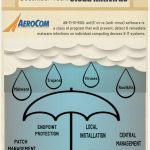Do you enjoy wearable devices, either in the form of a smart watch, smart clothing, or something similar? Now imagine how those devices communicate with your online profiles and how they store information about you – without any need for battery power. That is exactly what a new technology, Wi-Fi Backscatter, has the power to do. It is the first of its kind and can connect battery-free devices to Wi-Fi infrastructure.
But it doesn’t stop there! This technology could work on almost any device that comes to mind. A small sensor can be embedded into various objects like heart monitors, and it can monitor and track the health of your heart. But it doesn’t come with a small price tag; it is quite expensive to power and connect devices without battery power.
Watch the video below to learn more about this technology…
Engineers at University of Washington designed a new communication system that uses radio frequency signals as a power source and reuses existing Wi-Fi infrastructure to provide internet connectivity to these devices.
Shyam Gollakota, a UW assistant professor of computer science engineering, said, “If Internet of Things devices are going to take off, we must provide connectivity to the potentially billions of battery-free devices that will be embedded in everyday objects, we now have the ability to enable Wi-Fi connectivity for devices while consuming orders of magnitude less power than what Wi-Fi typically requires.”
The researchers working on this project will publish their results at the Association for Computing Machinery’s Special Interest Group on Data Communication’s annual conference, happening this month in Chicago. Eventually, the team hopes to start a company based on WiFi Backscatter.
The idea for this technology was built upon previous research, which proved that wearables could run without battery power or cords by using energy from wireless signals in the air. However, Backscatter allows for devices to be directly connected to the internet, which is a new feature that wasn’t possible before.
Co-author Joshua Smith, a UW associate professor of computer science and engineering and of electrical engineering said, “You might think how this could possibly work when you have a low-power device making such a tiny change in the wireless signal? But the point is, if you’re looking for specific patterns, you can find among all the other Wi-Fi reflections in an environment.”
As of now, Backscatter has been able to communicate with a Wi-Fi device at rates of 1 kilobit per second with approximately 2 meters between the devices. In the future, the team hopes to extend that range to 20 meters and file patents for WiFi Backscatter.
Tweet us your thoughts about Backscatter to @AeroCom_inc!
Source: University of Washington Blog






